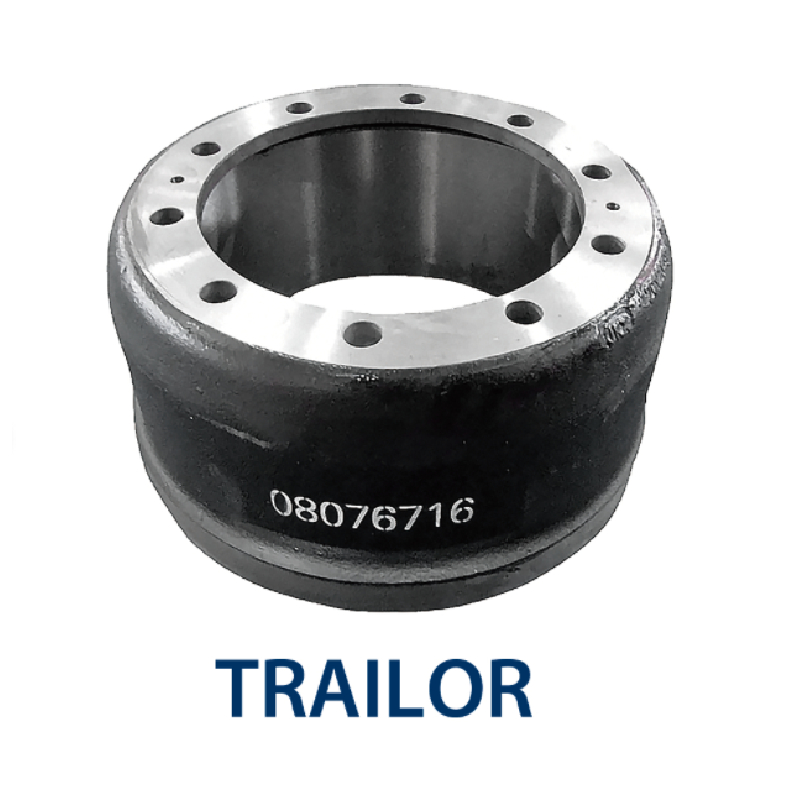Dec . 26, 2024 04:38 Back to list
Comparison of Brake Drums and Discs for Vehicle Performance and Safety
Brake Drum vs. Disc Understanding the Key Differences and Benefits
When it comes to automotive braking systems, the choice between brake drums and disc brakes is a critical consideration for both manufacturers and vehicle owners. Each type of braking system has its unique characteristics, advantages, and disadvantages, which can significantly influence vehicle performance, maintenance, and driving safety. In this article, we will explore the differences between brake drums and disc brakes to help you understand which system might be best suited for your vehicle.
Construction and Design
Brake drums are typically made from cast iron or aluminum and are designed to encase the brake shoes. When the driver applies the brakes, the brake shoes expand against the interior of the drum, creating friction that slows down the vehicle. This design has been around for a long time and is commonly used in older vehicles, as well as in the rear brakes of many modern cars.
On the other hand, disc brakes have a circular metal disc (or rotor) that rotates with the wheel. When the brakes are applied, brake pads clamp onto the rotor, generating friction to slow the vehicle. Disc brakes are often found on the front wheels of modern cars and are increasingly used on the rear as well due to their superior performance characteristics.
Performance
One of the most significant advantages of disc brakes is their superior performance in dissipating heat. When brakes are applied, they generate a substantial amount of heat due to friction. Disc brakes are less prone to fading under extreme heat conditions, making them more reliable for high-performance driving and in situations where sustained braking is necessary, such as driving downhill or during heavy traffic.
Additionally, disc brakes tend to offer a more responsive braking feel compared to brake drums. This responsiveness can translate into better control and shorter stopping distances, which is especially crucial in emergency situations.
brake drum vs disc

Maintenance
From a maintenance perspective, brake drums typically require more frequent adjustments and servicing compared to disc brakes. Drum brakes can accumulate dust and debris, which may affect their performance and increase the risk of sticking or seizing. While drum brake systems are generally less expensive to manufacture and can often last longer before needing replacement, the overall maintenance can become tedious.
Disc brakes, while usually more expensive upfront, require less frequent maintenance. The wear indicators on disc pads make it easier for drivers to monitor their brake condition, leading to more timely replacements. Furthermore, if a disc brake rotor becomes warped or damaged, it can often be resurfaced rather than replaced entirely, which can save costs.
Weight and Efficiency
In terms of weight, drum brakes are typically lighter than disc brakes, which can contribute to a slight improvement in fuel efficiency. However, as automotive technology improves, modern disc brake designs have become quite efficient and may negate this weight advantage. In many cases, the enhanced safety and performance features of disc brakes make them a preferable choice for most contemporary vehicles.
Conclusion
In conclusion, both brake drums and disc brakes have their merits, and the choice between them often boils down to the specific needs of the vehicle and driver. While brake drums can offer cost advantages and are suitable for certain applications, disc brakes are generally preferred for their superior performance, better heat dissipation, and lower maintenance requirements. Ultimately, understanding the differences between these two braking systems will help you make informed decisions regarding your vehicle's braking performance and overall safety. Whether you're a driver looking for reliable stopping power or a manufacturer designing the next generation of vehicles, weighing the pros and cons of each system is crucial to achieving optimal results.
-
Volvo Brake Drum: OEM Quality, Optimal Safety
NewsAug.27,2025
-
Durable Brake Drum MAZ for Heavy Duty Trucks | High Performance
NewsAug.26,2025
-
FUWA: Premium Quality, Reliable Performance & Innovative Solutions
NewsAug.25,2025
-
Liza Brake Drum: Superior Quality & Performance for Safe Driving
NewsAug.24,2025
-
Iveco Brake Drum | Premium OE Quality for Daily & Eurocargo
NewsAug.22,2025
-
Your Brake Drum Man: Quality & Performance Parts
NewsAug.21,2025
